Mastering Pimple Covering Makeup: Expert Techniques
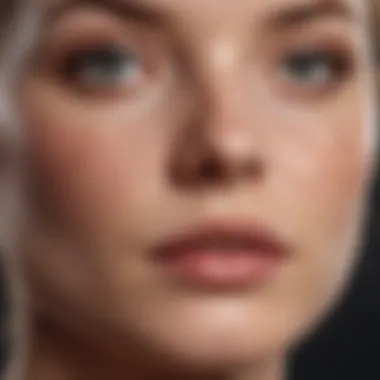
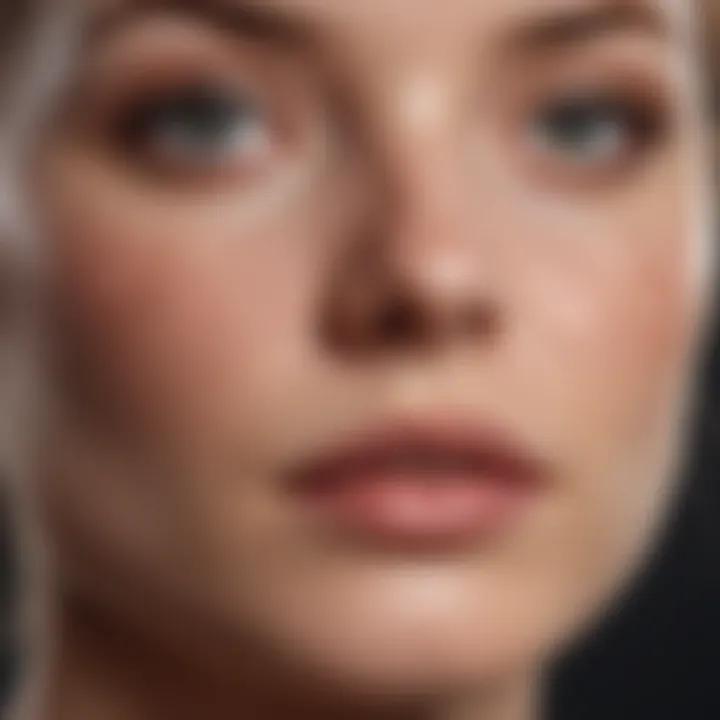
Intro
The quest for perfect skin can feel like a lifelong journey. For many, the occasional pimple is more than just a fleeting blemish; it can affect self-esteem and how we face the world. Not only does the mere existence of a pimple play on our nerves, but it often calls attention to the skin's texture and overall appearance. Mastering the art of pimple covering makeup is not just about applying products; it's about understanding how to work with different skin types, selecting the right tools, and employing techniques that help achieve a natural finish.
In this guide, we will navigate the often-treacherous waters of covering pimples. By breaking down various approaches, from basic skincare to nuanced makeup application, readers will discover effective strategies that cater to their individual needs. We will examine the subtle interplay between makeup products and practices that contribute to a flawless complexion, while still recognizing the important foundation laid by skincare.
Thus, whether you're facing a stubborn spot before an important event or trying to maintain your confidence in everyday life, this article aims to provide insightful techniques and an understanding of products that work to not only camouflage imperfections but also promote healthier skin.
Fashion Trends
Seasonal Styles
Makeup doesn't exist in a bubble; it reflects the seasons and the spirit of the times. For instance, fresh-faced looks tend to dominate spring, while deeper hues might surface in the winter months. This constant shift means our approach to covering pimples will also adapt. In spring, the emphasis might be on lightweight products that ensure breathable coverage, whereas, in autumn, full-coverage foundations might resonate more.
Influencer Inspirations
Following beauty influencers and their expertise can offer inspiration for covering makeup. Creators on platforms like Instagram or TikTok often share invaluable insights into the latest techniques, product reviews, and seasonal makeup trends. These influencers highlight products that do wonders, such as the NARS Radiant Creamy Concealer or the Fenty Beauty Pro Filt’r Soft Matte Longwear Foundation, inspiring many individuals to try something new.
Beauty Tips
Skincare Routines
An effective skincare routine lays the groundwork for successful makeup application. Understanding your skin type—whether it's oily, dry, or combination—will guide product choice. A good routine should include cleansing, toning, and moisturizing, tailored to your skin's needs. Often, the best concealers can work wonders on blemishes, but they won't reach their potential on skin that hasn't been prepped right.
Makeup Techniques
Employing the right makeup techniques is essential for a natural look. Here are a few tips:
- Apply primer: A smooth base helps foundation to glide on more evenly.
- Use a stippling brush: This technique allows for light layer application, perfect for those troublesome areas.
- Dab instead of swipe: Tapping lightly with your fingers or a sponge can create a more harmonious blend around the problematic area.
Product Reviews
Trending Products
Staying updated on trending products is crucial. The beauty industry evolves rapidly, and new formulations are frequently released. Recently, products like the Maybelline Fit Me Matte + Poreless Foundation and the Too Faced Born This Way Concealer have garnered massive attention. They provide robust coverage and cater to varying skin types, making them attractive choices for covering those pesky pimples.
Comparison Guides
Understanding the best products means comparing their features. For example, Fenty Beauty provides a full range of shades, while Maybelline stands out for its affordability. Reading reviews and checking discussions on platforms like Reddit can help narrow down choices. Here’s a quick comparison:
- Fenty Beauty Pro Filt’r Foundation:
- Maybelline Fit Me Matte + Poreless:
- Coverage: Full
- Finish: Matte
- Ideal For: Oily skin
- Coverage: Medium
- Finish: Natural
- Ideal For: Normal to oily skin
By paying attention to these trends, tips, and product comparisons, mastering pimple covering makeup becomes not just a skill but an art form—one that can enhance confidence and ensure that skin looks its best. Through understanding and practice, anyone can achieve a look that’s both polished and natural.
Preamble to Pimple Covering Makeup
In an age where social media reigns supreme, the spotlight often shines on perfect skin; however, the reality for many is far from it. Understanding how to effectively cover pimples with makeup is crucial for anyone wanting to boost their skin confidence and project a polished look. This introductory section sets the stage for discussing essential techniques and insights that equip individuals with the tools necessary for mastering the art of pimple concealing.
Makeup isn’t just a veneer; it acts as a tool for empowerment. When applied effectively, it can elevate one’s self-esteem and offer a fresh perspective in front of the mirror. It’s not only about hiding imperfections but also about enhancing one’s natural beauty and feeling at home in one’s skin. Many women, regardless of age, experience skin challenges like blemishes, and understanding how to address these with makeup can turn a frustrated morning into a confident day.
The Significance of Makeup in Skin Confidence
Feeling confident about one’s skin has a ripple effect on various aspects of life. Makeup can work wonders here; a dab of concealer can change how a person feels. When you conceal a pimple rightly, it’s like putting your best foot forward. That’s why knowing how to use makeup effectively is an art worth mastering.
Many don’t realize that makeup could help in controlling the narrative—your skin can express vibrancy, rather than insecurity. From younger generations to seasoned professionals, the importance of looking “put together” often translates into feeling capable and competent in daily interactions, be it personal or professional.
"Makeup isn't a mask; it's an expression of your individuality."
Yet, isn’t this about the power of perceptions too? When you’re armed with great techniques, the world mirrors back with confidence that may just spark more opportunities—be it a job interview or a casual meetup with friends. Makeup not only alters surfaces but also the psyche behind who we perceive ourselves to be.
Common Misconceptions About Concealing Pimples
As with many aspects of beauty, there are numerous myths that cloud the basic understanding of pimple covering makeup. One common misconception is that heavy products always yield the best coverage. This couldn’t be further from the truth; heavier makeup can lead to a cake-like appearance, drawing more attention to the very blemishes you wish to hide. It’s not just about piling it on; it's about knowing the right products and tools to use.
Another misconception is that flawless skin comes with magic tricks or expensive products alone. While product quality can make a difference, effective techniques and understanding your unique skin type can lead to better results than any high-end product could promise.
Lastly, people often believe that makeup can solve all skin issues. However, it’s crucial to remember that skincare plays an equal role. Neglecting proper skincare—like moisturizing and exfoliating—can lead to more breakouts, making the job of covering those imperfections even harder.
In summary, this introductory segment lays the groundwork for what lies ahead. The nuances of pimple covering makeup extend beyond superficial appearances to reveal a deeper understanding of skin, artistry, and self-perception. Throughout the article, we’ll unfold essential techniques, product insights, and common pitfalls, helping readers feel empowered and informed in their makeup journey.
Understanding Your Skin Type
Understanding your skin type is crucial when it comes to mastering pimple covering makeup. Each person's skin reacts differently to products and techniques, making it essential to know how your unique skin behaves. Factors like oiliness, dryness, sensitivity, and even hormonal fluctuations can greatly affect how effectively makeup covers imperfections without causing further issues. This knowledge becomes empowering, helping you choose the right products that complement your skin's needs instead of aggravating them.
Identifying Skin Types: An Overview
Identifying skin types isn't as daunting as it seems. Generally, there are four main skin types: normal, oily, dry, and combination.
- Normal Skin: Balanced and not too oily or dry, this skin type typically has few blemishes. If you have this skin type, you might rejoice in the ease of using various products without major irritation.
- Oily Skin: Characterized by excess sebum, oily skin may require more meticulous care. If you notice a shiny appearance or enlarged pores, your skin likely falls into this category. Products with mattifying properties can help control shine.
- Dry Skin: Often feeling tight or rough, dry skin can be easily irritated by harsh products. Choosing hydrating foundations and moisturizers is essential for preventing a cakey appearance.
- Combination Skin: A blend of dry and oily patches, this skin type can be tricky to navigate. Products that suit each specific area are necessary—perhaps mattifying for your T-zone, while opting for moisturizing formulas elsewhere.
To determine your skin type, wash your face and wait for about an hour without applying any products. This gives your skin the chance to return to its natural state, revealing its true character.
Tip: Be attentive to any changes; skin can fluctuate due to various factors like seasons or stress, affecting your choice of products and techniques.
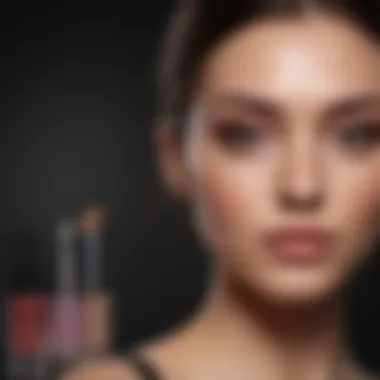
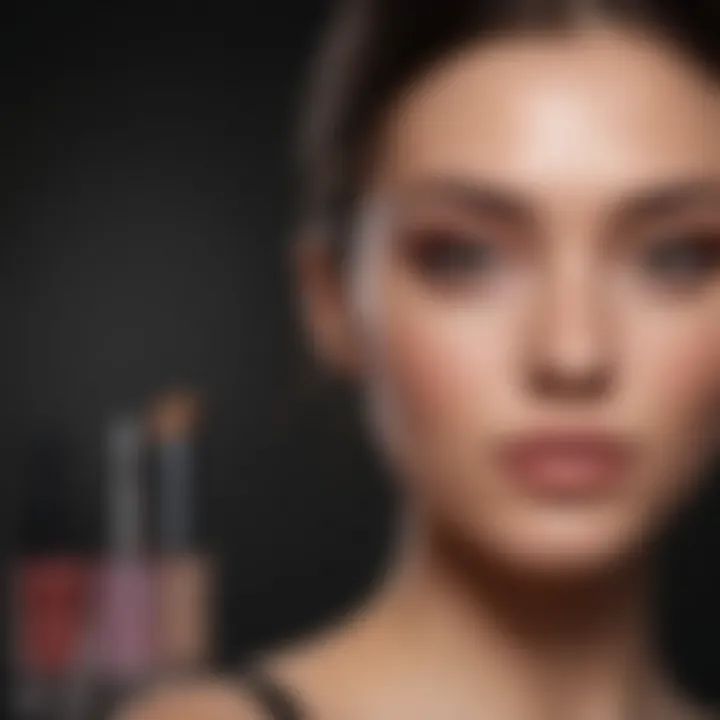
Choosing Products Suited for Your Skin
Once you’ve identified your skin type, selecting the right products becomes fundamental. The wrong choice can lead to breakouts or exacerbated skin conditions, reversing all your hard work in covering pimples effectively.
For oily skin, a lightweight, oil-free foundation can be a godsend. Look for formulas that state they are non-comedogenic; these won't clog your pores. Consider mineral powders and setting sprays designed to control shine throughout the day.
On the other hand, if you have dry skin, opt for cream or liquid foundations infused with moisture. Ingredients like hyaluronic acid or glycerin can keep your skin hydrated and encourage a glowy finish. Ensure to apply a good moisturizer before makeup application to create a more pliable surface.
Combination skin may require a mix-and-match approach. Perhaps a matte foundation in oily areas and a hydrating product in drier spots. Testing samples before buying can save a lot of headaches; it’s better to have a hands-on experience, feeling how the product interacts with your skin.
Prepping the Canvas: Skincare Principles
Preparing one’s skin before applying makeup is like setting the stage for a grand performance. Without a solid foundation, the makeup may not only fail to result in a flawless finish, but it could also exacerbate existing skin issues. Therefore, understanding skincare principles is essential in the quest for effectively covering pimples with makeup. This section will break down the vital roles of cleansing, exfoliating, moisturization, and priming, all of which set the tone for an impeccable look.
Importance of Cleansing and Exfoliating
Cleansing the skin is the first crucial step in any makeup routine. It is important to remove any dirt, oil, and impurities that may have accumulated on the skin throughout the day.
A well-chosen cleanser will work wonders, ensuring your face is a clean slate for makeup application. A gel-based cleanser might suit oily skin, while those with dry skin may prefer cream-based alternatives.
- Cleansing Benefits:
- Clears away excess oil and buildup.
- Helps to prevent clogged pores.
- Minimizes the likelihood of new breakouts.
Equally important is exfoliation. Regular exfoliation can help to slough off dead skin cells, revealing a smoother surface for makeup. It can be mechanical, like using scrubs with small granules, or chemical, involving the application of acids, such as glycolic or salicylic acid. When done correctly, exfoliation greatly improves skin texture.
"A good exfoliation routine can mean the difference between an uneven makeup application and a gorgeous, glowing finish."
Moisturizers and Primers: Creating a Flawless Base
Once the skin is cleansed and exfoliated, it’s time to add moisture back into it. Moisturizers should be chosen based on individual skin types. For instance, a lightweight, oil-free moisturizer would be more effective for those with blemish-prone skin, while a richer cream may be needed by those with dry patches.
- Why Moisturize?
- Hydrates the skin to prevent dryness from makeup.
- Improves skin elasticity, leading to a softer appearance.
- Helps in creating an even base for makeup.
Following moisturization, applying a primer is essential. Primers fill in fine lines and pores while providing a barrier between skin and makeup, increasing the longevity of your coverage. Look for mattifying primers if you’re dealing with oily patches, howver, if you have dry skin, a hydrating primer could be immensely helpful.
Embracing thorough skincare practices not only supports the integrity and health of the skin but also enhances the overall results of your makeup. When the canvas is correctly prepped, the task of covering pimples becomes all the more manageable, leading to a more confident you.
Essential Makeup Tools for Coverage
When it comes to effective pimple covering makeup, the tools used can significantly influence the outcome. Having the right equipment can mean the difference between achieving a smooth, natural look or ending up with a cakey disaster. Let’s delve into why these tools matter and how they can enhance your makeup experience.
Using the correct tools is not just about aesthetics; it's also linked to technique and ease of application. Brushes offer precision and control, making them ideal for spot application while sponges can create a seamless blend, particularly for foundations and creams. Knowledge of these tools empowers individuals, enhancing skin confidence while providing better coverage options.
Brushes vs. Sponges: When to Use What
The debate surrounding brushes versus sponges is almost as old as makeup itself. Each tool serves a different purpose, and knowing when to utilize them can greatly enhance your application technique.
Brushes:
- Control: Brushes provide excellent control, especially in targeted areas like pimples. With varied shapes and sizes, you can adjust your technique for smaller or larger imperfections.
- Texture: They are great for applying thicker products such as cream concealers or heavier foundations. The bristles can evenly distribute product without soaking it up, allowing for full coverage where needed.
- Types: Consider flat brushes for liquid products and fluffy brushes for powders.
Sponges:
- Blending: Sponges, particularly damp ones, are best for blending products into the skin, giving a seamless finish. When used correctly, they impart a natural glow that mimics real skin.
- Product Absorption: Sponges absorb some product, which can be beneficial for a lighter touch if you are aiming for a sheerer look.
- Technique: The bouncing technique often recommended with sponges can lead to a more diffused effect, which is ideal for those who prefer a less heavy application.
In practice, using both brushes and sponges might be the best strategy. For example, you could apply a thick layer of concealer with a brush, followed by dabbing with a sponge to absorb any excess and create an airbrushed finish.
The Role of Corrective Tools
Alongside traditional brushes and sponges, corrective tools have become invaluable in the makeup artist's arsenal. These tools address specific needs and enhance your ability to cover up pimples effectively.
- Corrector Palettes: Color correction is often the unsung hero of makeup. A palette containing shades such as green (to counteract redness) or peach (to neutralize dark under-eye circles) can pave the way for flawless cover-up. These toned textures can block the hue of blemishes before applying your main foundation or concealer.
- Finger Application: Sometimes, the best tool is your own finger. The warmth of your skin can melt the product slightly, allowing for a very natural application. Using your finger can be especially advantageous when working around delicate areas near the eyes.
- Setting Tools: After the application of any coverage product, having a set of quality setting brushes or puff can ensure that everything stays put throughout the day. Lightweight powder or setting spray can make a world of difference in maintaining that natural look.
"The tools you choose determine how well you can achieve your desired makeup outcome, making them an essential investment in your beauty routine."
With brushes and sponges at your disposal, along with corrective tools, you stand a better chance of mastering pimple covering makeup and embracing your natural beauty.
Choosing the Right Products for Coverage
Selecting the right products is crucial in achieving effective coverage for pimples. The myriad options available can be overwhelming, but knowing the subtleties behind foundations and concealers can make a remarkable difference in your makeup routine. Proper choices not only ensure your skin looks good but also feel comfortable and healthy.
When talking about choosing products, it goes beyond just matching shades. We must consider ingredients, finish, and texture as well. It’s like building a house; you need the right materials to create a strong foundation. Without the proper products, all the techniques in the world won’t matter much.
For coverings, the ideal product can provide coverage while still allowing the skin to breathe. This balance is essential to prevent worsening existing skin issues, which is something we all want to avoid.
Foundations: Liquid, Cream, and Powder Options
Foundations serve as the canvas for your pimple covering masterpiece, so understanding the different kinds can enhance the overall result.
- Liquid Foundations
These are the go-tos for many due to their versatility. They often come in a range of coverage options, from sheer to full. Liquid formulas can adapt well to different skin types, whether oily, dry, or combination. Just be aware that some may contain oils that can exacerbate breakouts, so checking the label is always wise. - Cream Foundations
If you're aiming for a heavier coverage, cream foundations might suit your fancy. They tend to be thicker and can effectively disguise blemishes while providing a rich, smooth finish. But, don’t go overboard! Applying too much can lead to a cakey appearance, which is the opposite of your goal. - Powder Foundations
Now, let’s talk powders. They typically offer a lightweight alternative and are especially good for oily skin. You can use them to set your makeup or wear them alone for a more natural look. However, take note—powder foundations alone might not provide enough coverage for stubborn pimples. A layering technique with a liquid or cream might be required for best results.
Selecting Concealers: Shades and Textures
The importance of selecting the right concealer can’t be understated. This comes down to understanding both shades and textures.
- Shades
Choosing the correct shade is crucial. A good rule of thumb is to select a concealer that is at least one shade lighter than your foundation. This creates a brighter effect and helps draw attention away from imperfections. For those pesky red spots, a green-tinted concealer can offset redness beautifully—it's like color theory coming to life! - Textures
Concealers come in various textures like liquid, cream, and stick. A liquid concealer typically blends well, making it great for a more natural look. Cream and stick concealers offer more coverage, which can be beneficial for larger areas or very noticeable pimples.
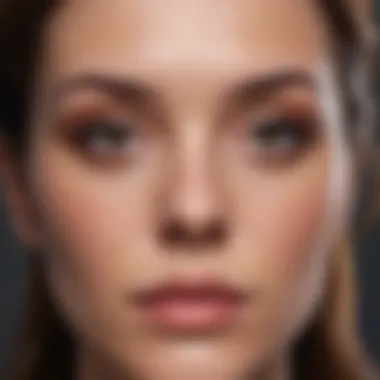
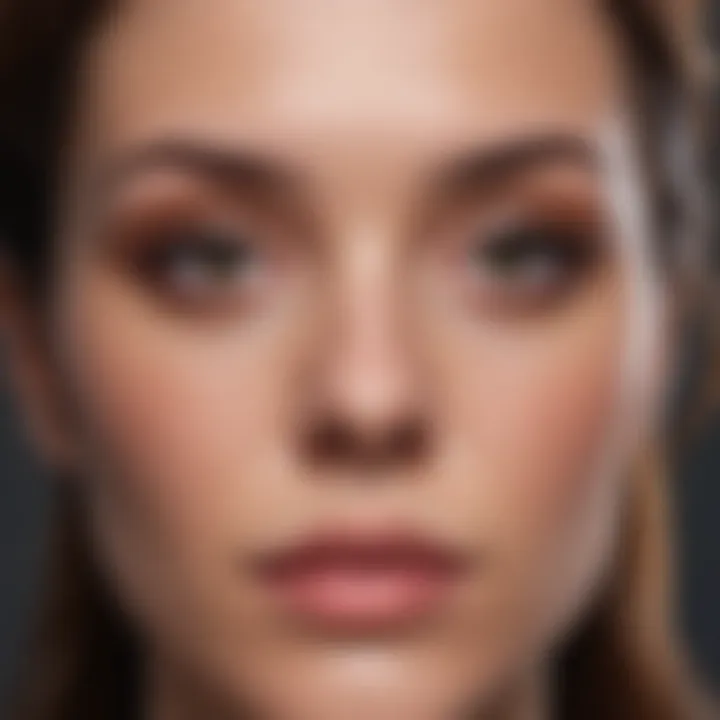
A practical approach here involves experimenting with samples to see how they sit on your skin throughout the day. Often, we find that what works well in the store doesn't always hold up under the scrutiny of bright lights or the passing hours.
"Choosing the right foundation and concealer is like choosing the right tools for a job; the outcome relies heavily on having the right options available."
Techniques for Effective Coverage
When it comes to mastering the art of pimple covering makeup, techniques play a pivotal role. Not only do they influence the outcome of your makeup application, but they also determine how naturally your skin appears throughout the day. The right technique ensures not only effective coverage but also helps in preventing the dreaded caking that can occur when too much product is applied in one go. Understanding these techniques can empower you to enhance your skin's appearance without feeling like you're wearing a mask.
In this section, we will delve into two essential techniques: layering and the debate between dabbing versus rubbing. Each has its significance and offers various benefits depending on skin type, condition, and the desired finish.
Layering: Achieving Depth Without Caking
Layering is often misunderstood. Some think it's just about piling on more product, but it actually involves a well-thought-out series of applications to build coverage gradually. This technique is especially effective for covering pimples, as it allows for both depth and a natural finish.
- Start with a primer that suits your skin type. This lays the foundation for easier blending and better adherence of products.
- Apply a lightweight foundation first. A liquid or a serum foundation can provide just enough coverage while maintaining a breathable texture. This is important for pimple-prone skin.
- Use a concealer specifically for the blemishes. When applying, gently tap the concealer on with a clean brush or finger.
- Gradually add more concealer to areas needing more coverage. This method helps avoid the temptation to smother the entire area with more product instantly, thus preventing a cakey appearance.
- Finish off with a setting spray or powder to lock everything in place without added bulk.
This careful layering leads to an effectively covered pimple while still allowing skin texture to show through, making for a more realistic look.
Dabbing versus Rubbing: Techniques Explained
The manner in which you apply your makeup makes a significant impact on the result. Dabbing and rubbing are two common techniques, and each comes with its own set of advantages.
- Dabbing: This method is often recommended by professional makeup artists. Dabbing, usually with fingers or a sponge, helps the product to melt into the skin, creating a seamless finish. Here’s how to do it:
- Rubbing: While rubbing can lead to coverage, it's easy to overdo it, which may cause irritation, especially on sensitive skin or inflamed pimples. If you choose to rub:
- Use your fingertip or a damp makeup sponge to gently tap the product onto the pimple.
- The warmth from your fingers aids in blending, allowing the product to absorb better into the skin rather than sitting on top.
- Be gentle and ensure you're not pulling at the skin.
- Use a light touch with a clean brush, focusing on spreading the product rather than pressing it in.
"The way you apply your makeup can make or break your look; precision in technique yields stunning results."
Ultimately, the choice between dabbing and rubbing comes down to personal preference and skin’s condition.
In summary, mastering these techniques will not only help you cover imperfections effectively but will also ensure your makeup lasts, looks seamless, and feels comfortable. The right application method paired with thoughtful layering can make all the difference in achieving that natural, flawless look, allowing your confidence to shine through.
Maintaining Natural Appearance
Maintaining a natural appearance while using makeup to cover pimples is crucial for achieving an authentic look that doesn’t scream, "I’m trying too hard!" This balance is not just about aesthetics; it's about feeling comfortable in your skin and presenting yourself confidently to the world. In a society where the pressure to appear flawless can sometimes feel overwhelming, the art of subtlety becomes essential. If you layer on too much product in the attempt to hide imperfections, you might actually call more attention to them. The key lies in achieving a look that flatters without being overly noticeable.
The Balance Between Coverage and Sheerness
Finding this balance can feel like a tightrope walk. Too much coverage can lead to a cake-like finish that can easily crack or settle into fine lines, while too little may not effectively hide blemishes. A good strategy is to start light and build up. A sheer, lightweight foundation can create a base that allows the skin's natural texture to shine through. Use a small amount of a thicker concealer only where needed—like right on that stubborn pimple.
- Tip: Apply your concealer with a brush for precision, or tap it in with your fingertip for a more blended look.
Additionally, consider incorporating a tinted moisturizer into your routine. This product can add a hint of color while still allowing your skin to breathe. Remember, it's all about enhancing what you already have, rather than covering it up completely.
Setting Makeup: Powders and Sprays that Work
Once you’ve achieved your desired level of coverage, the next step is to set your makeup. Setting powders and sprays are essential tools that can ensure longevity without compromising the natural finish. A light dusting of translucent setting powder can soak up excess shine without adding too much texture. On the other hand, setting sprays can offer a dewy finish that makes your skin appear fresh and hydrated.
Using a setting spray is often a game changer, especially for long days or humid weather. Just a few spritzes can lock everything in place.
- Recommended Products: Look for lightweight formulas that contain ingredients like aloe vera or chamomile, as these can provide a soothing effect while helping your makeup stay put.
"Makeup should feel like an enhancement, not a mask. Strive for that effortless look where your beauty shines through!"
In summary, maintaining a natural appearance when it comes to covering pimples is less about hiding and more about highlighting your unique features. The art of subtlety in makeup application, alongside the right choice of products, plays a pivotal role in achieving a flawless yet authentic look. By keeping the coverage light and opting for setting techniques that enhance rather than bury, you'll present a polished image that feels true to yourself.
Addressing Common Mistakes in Pimple Covering Makeup
When it comes to pimple covering makeup, the fine line between achieving a flawless finish and making the situation worse can be quite slim. The nuances of makeup application often lead to errors that can undermine the desired outcome. Therefore, understanding and addressing common mistakes becomes essential for anyone looking to effectively conceal blemishes without drawing attention to them. Recognizing these pitfalls not only enhances one’s technique but also contributes positively to overall skin health.
Overdoing It: The Risk of Excess Product
Using too much product is a common blunder that many encounter when attempting to cover pimples. The temptation to slather on concealer may stem from a place of frustration, but this approach often backfires. Excess product can lead to a cakey appearance, making imperfections more visible instead of masking them. To strike the right balance, it is crucial to apply products in thin layers. Start with a tiny amount and build coverage gradually. This method allows the skin to breathe and keeps the makeup from settling into the creases, which can amplify the look of blemishes.
- Tip: Use a clean brush or sponge to manage product application—less is more.
Applying a generous layer might feel secure initially, yet throughout the day, it can lead to a patchy effect as skin oils mix with the makeup. As the day drags on, this may not only tarnish your look but also damage the delicate skin around pimples, causing more irritation. Therefore, always remember: a little goes a long way.
Ignoring Skin Condition: Why It Matters
Another frequently overlooked mistake is neglecting the skin’s current condition before makeup application. Factors like inflammation, dryness, or high oil content can severely influence how makeup adheres and looks on the skin. For instance, applying a heavy foundation on overly dry skin can highlight flakiness rather than hiding it. Moreover, if your skin is inflamed due to a breakout, using products that are too heavy or not non-comedogenic can exacerbate the issue.
Knowing your skin's state can dictate not only the type of products you should use but also the techniques for application. Here are some considerations:
- Assessing Texture: If the skin feels rough, it’s wise to exfoliate gently beforehand to create a smoother surface.
- Moisturizing: For skin that’s dry, employing a hydrating primer can significantly enhance how makeup sits throughout the day.
Understanding what your skin needs before makeup application can lead to better outcomes, enhancing the overall appearance while also ensuring long-term skin health.
"The best makeup is the makeup that enhances your natural beauty, not masks it."
By addressing these common mistakes in pimple covering makeup, individuals can refine their technique, leading to a more polished and confident look. Whether it’s about using the right amount of product or recognizing what your skin needs, each step counts toward achieving that coveted, natural appearance.
Aftercare and Skin Health
Understanding the significance of aftercare is essential, especially after using makeup to cover imperfections like pimples. Proper aftercare not only ensures that the skin remains healthy but also plays an integral role in the effectiveness of any makeup application. When makeup is applied, it can clog pores, leading to potential breakouts if not handled well. Thus, integrating a thoughtful aftercare routine is key to maintaining skin vitality.


Importance of Removing Makeup Properly
Removing makeup properly is akin to putting on seatbelts while driving; it’s a non-negotiable step for safety. A clean slate is essential after a day of covering imperfections. Failure to remove makeup adequately can lead to clogged pores, resulting in dullness, irritations, or even more pimples popping up.
Here are a few points emphasizing the importance:
- Prevention of Breakouts: Makeup can trap dirt and oil, which facilitates the growth of bacteria. Proper removal diminishes this risk.
- Keeping Skin Hydrated: When residue is left on the skin, it can lead to dehydration, exacerbating skin issues further.
- Promoting Skin Regeneration: At night, the skin goes through a natural renewal process. A clean face enables this process to occur uninterrupted.
To effectively remove makeup, consider using cleansing oils, micellar water, or gentle wipes that break down product without harsh scrubbing. Following up with a good cleanser ensures that every last bit is washed away.
Post-Makeup Skincare Routines
Once makeup has been removed, a solid post-makeup skincare routine is vital for restoring the skin’s health and glow. This is especially important when it comes to aftercare for those who often deal with acne or blemishes. Here’s a simple yet effective routine to integrate:
- Gentle Cleanser: Start with a mild cleanser that suits your skin type to avoid stripping natural oils while cleansing effectively.
- Toning: Apply a toner to help balance the skin’s pH levels. This can also aid in minimizing pores, which is crucial after heavy makeup usage.
- Moisturizing: It’s critical to hydrate the skin post-cleansing. Choose non-comedogenic creams or gels to avoid clogging pores.
- Treatment Products: If you tend to have acne, consider incorporating products with salicylic acid or benzoyl peroxide for targeted treatment.
- Night Cream or Oil: Finish with a lightweight night cream or an oil rich in antioxidants, which can nourish the skin overnight.
"Taking care of your skin isn’t just about vanity; it’s about respect for your body, and a cleaner skin encourages self-love."
By dedicating time for an aftercare routine, you can enhance the longevity of your makeup application while simultaneously nurturing your skin. Remember, preemptive care often translates to healthier skin in the long run. Taking it step by step can lead to significant changes in both appearance and confidence.
Professional Tips from Makeup Artists
When it comes to mastering the art of concealing pimples, communication with makeup artists reveals a treasure trove of techniques, tricks, and personal experiences that can greatly enhance your makeup routine. These expert insights are key, as they reflect years of practice and the knowledge gained from working on various skin types. By integrating their tips into your own routine, you can not only improve your technique but also boost your confidence.
Knowledge That Comes from Experience
Makeup artists often have firsthand experience with a variety of skin issues, including acne and its aftermath. They understand the right way to apply products to avoid emphasizing imperfections. One common nugget of wisdom is to prep the skin appropriately before makeup application. Cleansing and moisturizing can make a world of difference. A makeup artist might say, “Dry, flaky skin just doesn't hold makeup well.” Maintaining skin's hydration provides a smoother surface for any makeup you apply.
Texture matters when selecting products. Artists often recommend testing products on the wrist instead of the back of the hand. This area mimics the facial skin texture more accurately, allowing for better product selection.
Another vital tip revolves around layering. For instance, instead of slapping on a thick layer of foundation, an artist might advise, "Less is more. You're better off applying several thin layers of foundation. This prevents your makeup from feeling heavy or looking cakey." This philosophy, combined with experience, can lead to fresher and more natural finishes.
Innovative Techniques in the Industry
The beauty industry is constantly evolving, and with it comes innovative techniques that can elevate your makeup game significantly. For instance, the trend of using color-correcting concealers has gained momentum. Using shades like green to neutralize redness or peach for dark spots can set the stage for smoother coverage—this is a practice that professional makeup artists often emphasize.
Moreover, the technique of "baking" has become popular within the realm of professional artistry. This method involves applying a generous amount of translucent powder to areas where concealer has been applied, allowing it to sit for several minutes before dusting off the excess. The idea is to create a soft, matte finish that lasts longer throughout the day.
Makeup artists nowadays also advocate for a more minimalist approach. Rather than layering various products, they'll often suggest sticking to a few high-quality staples that can be built up as needed.
“Artistry is not about hiding; it’s about enhancing who you already are.”
—An essential reminder from industry professionals.
Long-Term Strategies for Healthy Skin
When it comes to mastering the art of pimple covering makeup, having a solid foundation is crucial. Long-term strategies for maintaining healthy skin not only help in reducing the frequency of breakouts but also in ensuring that makeup looks its best. Unlike quick fixes that focus solely on the surface, these strategies dig deeper, addressing the underlying factors that affect skin health.
Diet and Hydration: Influencing Skin Texture
A wise saying goes, "You are what you eat," and this rings especially true for your skin. Nutrition plays a pivotal role in how our skin appears. Foods rich in vitamins, minerals, and antioxidants can significantly benefit not just your overall health, but also your skin's structure and elasticity.
- Vitamin C promotes collagen production, essential for skin firmness. Foods like oranges, strawberries, and bell peppers should be staples in your diet.
- Omega-3 fatty acids, found in fish like salmon and seeds such as flaxseed, help reduce inflammation. This, in turn, can lessen the likelihood of breakouts and maintain a more even skin tone.
- Water can't be overstated. Staying hydrated flushes toxins out and keeps the skin plump and supple. Aim for at least eight glasses a day, adjusting for physical activity levels.
But it’s more than just focusing on the ‘good’ food. Being mindful of what you’re eating is equally important. For instance, high-sugar and high-dairy diets have been linked to increased acne in some studies. Moderation is key if you want your skin to reflect your inner health.
"Eating a balanced diet is like tuning a guitar; it takes time and patience, but the right notes can create beautiful melodies."
Consulting Dermatologists for Personalized Advice
Sometimes, the guidelines found in magazines or online forums just don’t cut it. Individual skin conditions vary greatly, and what works wonders for one person may not do a thing for another. That’s where consulting a dermatologist comes into play.
A dermatologist can offer insights tailored specifically to your skin type and issues, something a general article cannot. Some key factors to discuss during your consultation might include:
- Personal Skin History: Previous breakouts, allergies, and other conditions can dictate what treatments or products to avoid or use.
- Lifestyle Factors: Stress, environment, and routine can affect your skin too. A dermatologist takes these facets into consideration when formulating a skincare plan.
- Customized Treatment Plans: From topical medications to chemical peels, these professionals can craft a regimen that specifically targets your issues over time rather than applying a blanket solution.
Taking that extra step to consult a professional can yield long-term benefits that drastically improve skin health.
Finale: Embracing Natural Beauty with Confidence
In the ever-changing landscape of beauty, the relationship between makeup and self-image holds remarkable significance. Embracing natural beauty means recognizing that imperfections, including pimples, are part of the human experience. Rather than masking them completely, mastering the art of covering them enables individuals to express themselves confidently without compromising authenticity. Makeup isn’t just about altering appearances; it can act as a powerful tool for self-empowerment and expression.
Understanding the techniques for effective coverage can transform how one views themselves in the reflection of a mirror. There’s a palpable difference in the way a person carries themselves when they feel comfortable in their skin. Applying makeup thoughtfully can boost self-esteem, allowing individuals to step out into the world with poise. This journey requires patience, practice, and an appreciation for the subtle art involved in achieving that flawless finish.
A few key considerations can enhance this process:
- Recognizing the importance of adaptability; what works today may not tomorrow.
- Investing in quality tools and products tailored to one's unique skin type
- Practicing self-acceptance and balancing coverage with a natural finish
As we navigate the intricate dance between makeup and our self-image, it’s vital to remember that beauty does not reside in perfection. It lies in the moments of authenticity and self-expression.
"True beauty comes from within, and makeup should enhance our natural features, not diminish them."
The Relationship Between Makeup and Self-Image
The fusion of makeup and self-image is a complex interplay. On one hand, makeup can serve as a surface-level mask, meant to hide blemishes and perceived flaws. On the other, it can become a canvas for creativity and individuality. For many, using makeup means a moment of expression — a way to celebrate one's uniqueness irrespective of societal beauty standards. The confidence boost that comes with applying makeup can alter one's mindset and promote a richer self-dialogue about beauty and acceptance, inviting a more profound relationship with one’s appearance.
Moreover, it plays into a wider narrative: skin imperfections, such as pimples, can have emotional bearings. Women of all ages might relate these to feelings of inadequacy or judgments from peers. Thus, knowing how to manage these perceptions through covering techniques can foster a more positive self-image.
Final Thoughts on Mastery of Coverage Techniques
Mastering coverage techniques isn’t solely about cosmetic skill but involves a broader understanding of personal beauty philosophy. Each method, from layering products to choosing the right application tools, contributes to a broader goal of authenticity and self-acceptance. Think of it as a journey rather than a destination.
As you craft your approach to makeup — particularly the art of concealing pimples — keep these pointers in mind:
- Experiment with different products and techniques to see what resonates with you.
- Stay attuned to your skin’s reactions and adjust your routine accordingly.
- Don’t shy away from asking professionals for advice or tips; there’s a world of knowledge available.
It’s important to integrate all this knowledge into a cohesive routine, helping to fine-tune both skills and confidence. Remember, the essence of mastery lies not just in knowledge but in how one feels while engaging with it. Embrace every imperfection, as they contribute to the beautiful tapestry of who you are. With the right techniques at your fingertips, you can achieve a natural look, enhancing your features without feeling like you're hiding behind a mask.



